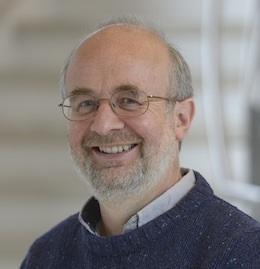Project overview
Nuclear magnetic resonance (NMR) is a versatile analytical tool with applications ranging from basic physics to medicine. In its imaging mode, MRI, it provides information on anatomy, metabolism and biological functions. However, NMR has low sensitivity, making many of its uses difficult and others impossible without some form of signal enhancement. For example, metabolic imaging of human cancer by MRI was only made possible by the recent introduction of nuclear spin hyperpolarisation methods. Among these methods, dissolution dynamic nuclear polarisation (dDNP - central to this proposal) prepare a very high degree of nuclear spin polarisation that can increase the signal-to-noise ratio up to 10,000 times. However, despite this enormous enhancement, in-vivo applications remain on the borderline of feasibility because of the relatively short lifetime of the enhanced polarisation. For example, the spatial resolution of hyperpolarised MRI images of cancer metabolism is compromised by the loss of signal during transport and purification of the hyperpolarised material. Improvements to post-hyperpolarisation protocols, allowing transport of hyperpolarised material, would therefore improve emerging techniques and open up new areas of research and applications.
The proposed research will address three interconnected main obstacles: the lack of purity of the hyperpolarised material (electron radicals are required by the hyperpolarisation technique); the limited lifetime of hyperpolarised magnetisation (the presence of radicals and many other intrinsic factors make nuclear spin polarisation to decay over time, a mechanism know as spin relaxation); the limited mobility of the polarising equipment (dissolution-DNP equipment is expensive and bulky and the limited lifetime of the hyperpolarised agents makes it impossible to transport the agent for significant distances. The point-of-use is therefore confined to the near vicinity of the point-of-production).
In order to overcome these obstacles we will use supercritical-CO2 chromatography to rapidly and efficiently purify the hyperpolarised material. Because spin polarisation storage times are roughly inversely proportional to viscosity, and because supercritical-CO2 has a viscosity 10-30 times lower than that of conventional solvents, we will also store the purified material under supercritical-CO2, potentially extending the length of storage time by 5-10 times. We will then explore extending storage time further by using long-lived states and by freezing the hyperpolarised solution under liquid nitrogen, freezing molecular motion and therefore minimising relaxation losses. We aim to extend storage of hyperpolarised material to over two hours, increasing distance between the point-of-production and the point-of-use. We also intend to build a convenient and portable transport device to enable transport of hyperpolarised material over long distances (as allowed by maximum lifetime achieved) with loss of no more than 50% of polarisation.
The proposed research will address three interconnected main obstacles: the lack of purity of the hyperpolarised material (electron radicals are required by the hyperpolarisation technique); the limited lifetime of hyperpolarised magnetisation (the presence of radicals and many other intrinsic factors make nuclear spin polarisation to decay over time, a mechanism know as spin relaxation); the limited mobility of the polarising equipment (dissolution-DNP equipment is expensive and bulky and the limited lifetime of the hyperpolarised agents makes it impossible to transport the agent for significant distances. The point-of-use is therefore confined to the near vicinity of the point-of-production).
In order to overcome these obstacles we will use supercritical-CO2 chromatography to rapidly and efficiently purify the hyperpolarised material. Because spin polarisation storage times are roughly inversely proportional to viscosity, and because supercritical-CO2 has a viscosity 10-30 times lower than that of conventional solvents, we will also store the purified material under supercritical-CO2, potentially extending the length of storage time by 5-10 times. We will then explore extending storage time further by using long-lived states and by freezing the hyperpolarised solution under liquid nitrogen, freezing molecular motion and therefore minimising relaxation losses. We aim to extend storage of hyperpolarised material to over two hours, increasing distance between the point-of-production and the point-of-use. We also intend to build a convenient and portable transport device to enable transport of hyperpolarised material over long distances (as allowed by maximum lifetime achieved) with loss of no more than 50% of polarisation.
Staff
Lead researcher
Other researchers
Collaborating research institutes, centres and groups
Research outputs
Aliki Moysiadi,
Francesco Giustiniano,
Andrew M.R. Hall,
Topaz Alaska Alice Cartlidge,
Lynda J. Brown,
, 2021
, Frontiers in Chemistry
, 9
Type: article
Giulia Melchiorre,
Ciara Nelder,
Lynda J. Brown,
Jean-Nicolas Dumez,
, 2021
, Physical Chemistry Chemical Physics
, 23 (16) , 9851--9859
DOI: 10.1039/D1CP00807B
Type: article
Andrew MR Hall,
& David Cartlidge
, 2020
, Journal of Magnetic Resonance
, 317
Type: article
Kirill F. Sheberstov,
Alexey S. Kiryutin,
Christian Bengs,
Joseph T. Hill-Cousins,
Lynda J. Brown,
Alexandra V. Yurkovskaya,
& Konstantin L. Ivanov
, 2019
, Physical Chemistry Chemical Physics
, 21 (11) , 6087--6100
DOI: 10.1039/C9CP00451C
Type: article

